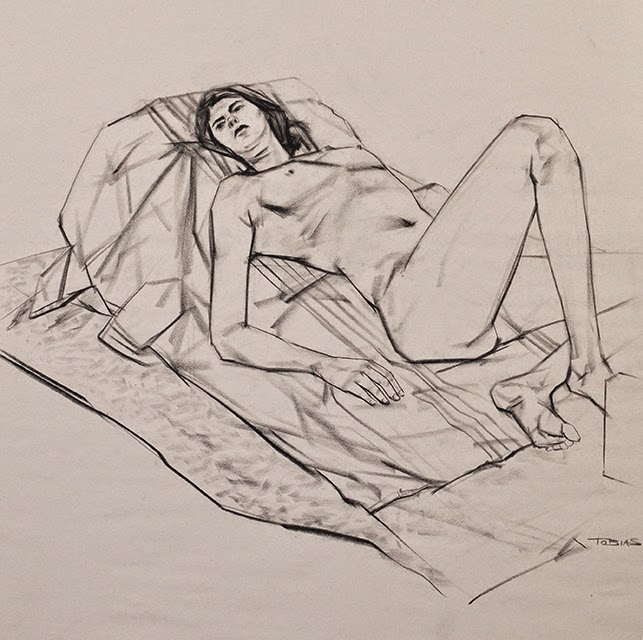Untitled #38
24" X 36"
Charcoal on Paper
2012
This 40 min. contour study was completed the week after I went to see an exhibition of Klimt drawings at the Getty Center in Los Angeles. He was such a master draftsman with pure line, and he had this amazing knack to be able to capture subtle turns of the human head with such sensitive accuracy. As in this study of a child's head:
The head is tilted along every axis in this study, and all of those small shapes on the child's left side are very carefully placed. Unless the head is propped up against a wall or other structure, this kind of head tilt is typically very difficult for a model to hold with any real accuracy over the length of a session as the muscles in the neck usually get sore. This is another favorite:
All of these angles are very challenging when drawing from life because even the slightest movement can cause the perspective to shift, which can lead to problems of coherence. This is especially important in drawing out the angle of the eyes, mouth, jaw, and nose. One can imagine if the models head in the bottom study even turned the smallest amount you would no longer see the edge of the eye. Models are always moving in the slightest so these studies must have been a real workout for his visual memory and patience on his part, and the models.











